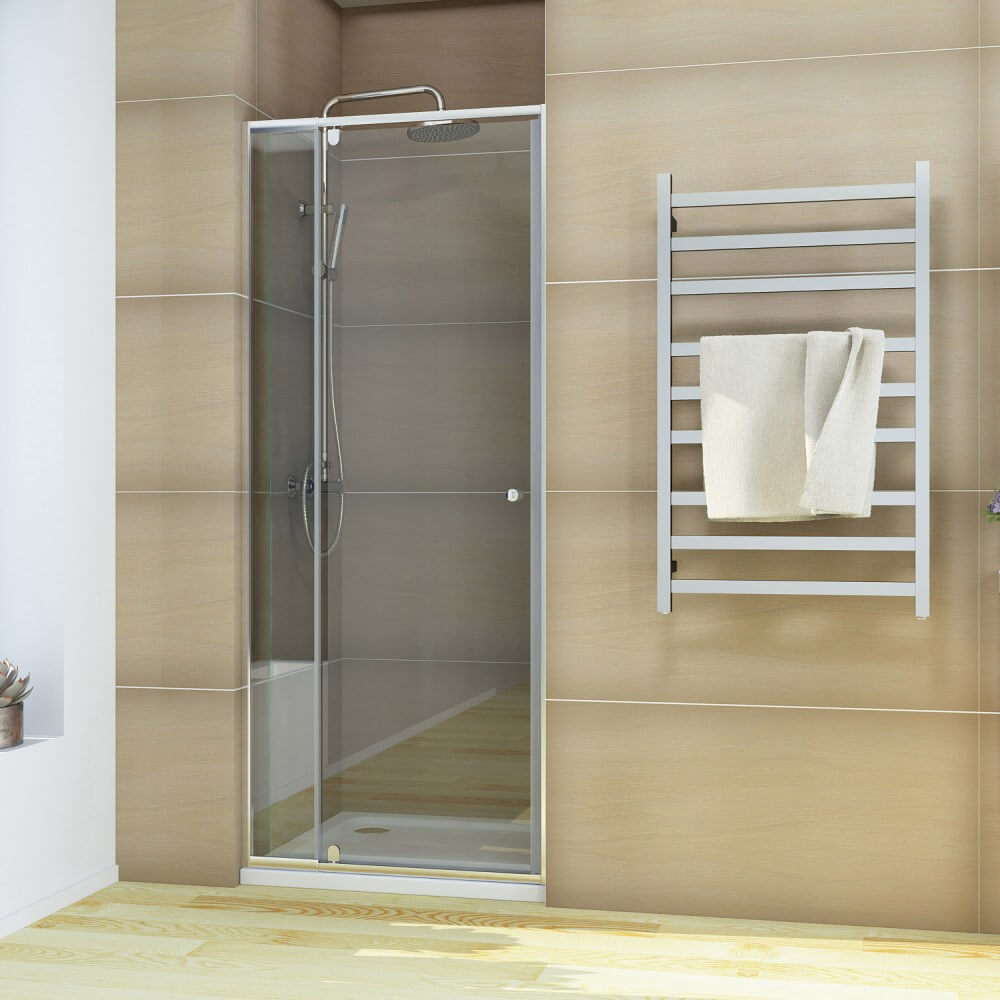Showering is a daily routine for most Australians, but the choice between shower screens and shower curtains has recently sparked debate. As the country faces ongoing droughts and water restrictions, eco-conscious homeowners renovating their bathrooms are questioning which option saves more water and space.

The shower screen, usually made of glass, acrylic, or another waterproof material, provides an enclosed showering area. Shower curtains, on the other hand, typically hang from rails and can be opened and closed. Both have pros and cons when evaluating water efficiency, use of space, ease of cleaning, aesthetics, and other practical factors.
With much of Australia classified as arid or semi-arid, water conservation is crucial. The continued climate change impacts of higher temperatures and reduced rainfall are putting further pressure on water resources. Environmentally aware homeowners want to do their part without sacrificing functionality or style.
Balancing these considerations is the key when choosing between shower screens and curtains. As renovating Australian households decide between these two popular and practical options, the debate over which choice saves more water and fits better continues.
Water Efficiency Comparison
When evaluating the water conservation impact of shower screens versus curtains, three key factors come into play: direct water usage, temperature regulation, and compliance with Australian standards.
Impact on Water Consumption
The main advantage shower screens have over curtains is better water containment within the enclosed space. Screens form a solid barrier that prevents water splashing outwards, minimizing wasted water. Meanwhile, shower curtains often have small gaps between sides or at the base, allowing leakage. This leakage necessitates longer shower times to properly rinse off all soap and shampoo.
Although quantitative studies comparing water usage are lacking, anecdotal evidence from homeowners supports this difference. For example, some have shared that switching from curtains to screens reduced their typical shower water consumption by 2-4 liters. Applying this across a household’s weekly showers shows the potential for significant savings.
Temperature Regulation
Another consideration is the ability to retain heat inside the showering space. Shower screens made of glass or acrylic panels allow very little temperature exchange with the ambient bathroom air. This keeps hot water use minimized since less reheating is required.
In contrast, basic plastic or fabric curtains pose more of a heat exchange issue. As hot water generates steam against the cold curtain surface, some conduction occurs. Over the course of a long shower, this can gradually cool down the interior space, prompting adjustments to higher temperatures.
Australian Standards
All new shower installations must meet national WELS (Water Efficiency Labelling Standards) benchmarks for flow rate and other water usage regulations. Both shower screens and curtains can fulfil these minimum legal standards. However, opting for water-saving features such as low-flow shower heads, greywater heat recovery units, and water-efficient faucets further reduces consumption. Homeowners should explore integrating these options alongside deciding between screens or curtains for optimal conservation.

Space-Saving Analysis
In addition to water efficiency, space optimization is a key goal when renovating small bathrooms. Both shower screens and curtains have merits in their physical footprint, visual perception, and flexibility of installation.
Physical Footprint
Modern glass shower screens emphasize sleek, frameless panels that occupy very little volume outside the shower area itself. This helps maximize usable floor and storage space around it, accommodating compact layouts. Curtains need enough clearance so they can be fully slid open without catching. Yet well-designed tracks and the flexible fabric when closed reduce the permanent footprint.
Overall, screens claim less absolute space from corner to corner. But curtains may fit reasonably within given dimensions. Custom-designed solutions for both can tailor them to the bathroom’s physical space.
Visual Space Perception
Transparent glass screens lend a sense of increased openness even in small bathrooms, enabling better lighting penetration. This also makes the shower area seem less visually dominant. The opaque bulk of closed curtains, on the other hand, can feel more imposing and cluttered. Strategic placement of screens and curtains considering sightlines and lighting can alleviate these issues.
Installation Flexibility
Curtains maintain an advantage in adaptable installations ranging from corner spaces to niches to irregular alcoves. Their adjustable tracks let them conform as needed. In contrast, standard glass screens fit better in conventional 90-degree layouts. Severe angles or curving walls become very custom jobs. This likely requires professional measurements and carefully cut glass pieces.
On balance, shower curtains facilitate more DIY-friendly and budget-conscious installations. But with some added effort, glass screens can also suit atypical bathroom dimensions with customized solutions. The visual reward often makes it worthwhile for small spaces.

Practicality for Daily Use
Alongside water and space factors, homeowners must evaluate maintenance needs, durability, and safety when deciding between shower screens versus curtains.
Maintenance & Cleaning
The enclosed nature of glass shower screens allows little moisture contact with bathroom walls and ceilings. This significantly reduces mold buildup in those areas. However, the panels themselves require frequent wiping down to prevent mineral deposit streaks and soap scum buildup. Using squeegees after showering helps manage this cleaning chore.
Meanwhile, humidity easily penetrates shower curtains, promoting mold growth on the fabric itself if not rinsed and allowed to dry fully. Replacement every 2-3 years is often needed as curtains gradually mildew. The more affordable cost makes this feasible.
Durability
Tempered safety glass for shower screens boasts extreme resilience against heat, scratches, and impacts. Properly installed and sealed screens have lifespans measured in decades rather than years. Though rare, spontaneous breakage can randomly occur due to nickel sulfide impurities. Frameless models further reduce this risk by lacking metal edges.
Plastic and fabric shower curtains, often reinforced with magnets or weights, withstand typical wear and tear. But the openings and closures subject them to tearing and deformation over shorter time periods. Budgeting periodic curtain replacements is advised.
Safety Considerations
Glass shower screen risks center around shattering events, although safety tempering processes minimize this. Selecting reputable brands that meet Australian glass installation standards (AS1288) is vital. If breakage occurs, ensuing shard shapes aim to prevent severe cuts.
For curtains, slips and falls are the primary hazards. Choosing textured and grippy surfaces rather than very smooth vinyl can aid traction when entering and exiting wet showers. Magnets keeping curtains fully secured also support safety.
Overall, glass screens probably edge out curtains on safety due to regulatory oversight on suitable materials. But both can suit households with children or seniors when thoughtfully addressed.

Cost Analysis
One of the biggest factors influencing Australian consumers’ choice between shower screens and curtains is cost, both upfront and ongoing. A lifetime analysis helps determine overall value for money.
Initial Costs
Frameless glass shower screens range anywhere from AUD 400 for basic models to over AUD 1,500 for higher-end bespoke solutions. This covers customized measurement and fitting by professional installers using premium materials. The investment may be worthwhile for long-term bathrooms. But as a replacement for existing showers, households may balk at the larger single expenditure despite added resale value.
Meanwhile, affordable shower curtains start under AUD 50 for basic polyester models. Even well-designed weighted anti-bacterial curtains with decorative patterns cost under AUD 150. Additionally, DIY beginners can comfortably tackle installations using adjustable track hardware without professional services. This offers substantial budget savings.
Long-Term Expenses
Tempered glass screens that survive initial years without freak breakage risks reliably serve 10-15 years or longer. Aside from infrequent sealing reapplications and squeegee replacements, they require little maintenance expenditure. Even factoring specialty glass cleaning solutions, the overall lifetime costs remain low.
In contrast, cheap shower curtains may need replacing every 2-3 years. Factoring just 3 replacements to match a quality screen’s lifespan already equals or exceeds the higher initial screen investment. If opting for fancier curtain materials like coated fabrics, more frequent trades-outs add up costs further.
As you can see, shower screens carry higher initial purchase and installation costs. But they compensate for this long-term through greater durability and lower recurring expenses on maintenance or replacements. Eco-conscious households also recoup savings from reduced water and energy consumption. Weighing all considerations shows glass screens can ultimately win out economically too.
Conclusion
The choice between shower screens and shower curtains for Australian households involves balancing priorities like water efficiency, use of space, upfront costs, ongoing maintenance, and ease of installation among other practical factors.
For renovators focused on elevating a bathroom’s sustainability and visual appeal, glass shower screens make compelling sense. Their enclosed water containment, sleek footprint, and lifetime value for money edge out basic curtains. Going with frameless screens and strategic placement to maximize perceived openness works wonderfully to elevate even very compact rooms.
On the other hand, households on tighter budgets or tackling shorter-term renovations may decide basic shower curtains better suit their needs. The affordable flexibility and quicker DIY installations have their own advantages. Upgrading to mildew-resistant weighted models adds some premium features for moderate costs.
Ultimately, the showering goals and financial situations of the homeowners themselves should guide the decision between committing to durable screens or changeable curtains. Finding the right balance is key.
For further consultation from shower screen experts on recommended models, get in touch with the professional design team at Elegant Shower AU Online Shop. Describe your bathroom space, functional needs, style preferences, and budget for personalized advice and solutions for showers and screens.



